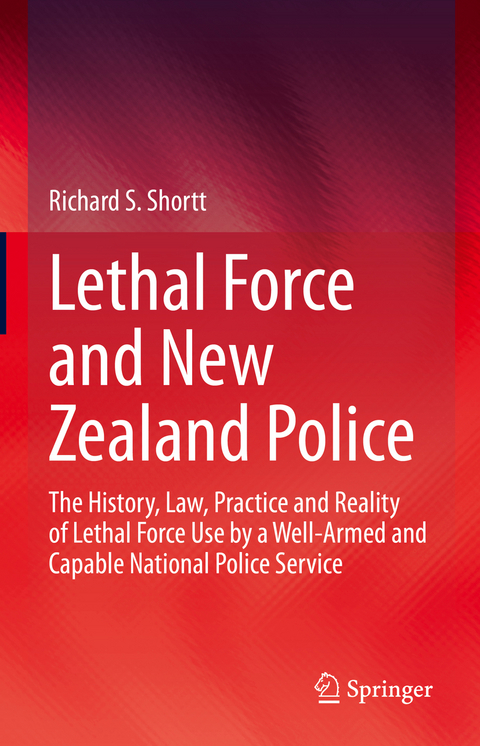
Lethal Force and New Zealand Police
Springer International Publishing (Verlag)
978-3-031-05268-2 (ISBN)
This book challenges the notion that the New Zealand Police are one of only four global police services that does not have routinely armed officers, using arguments and facts drawn from 2000 to 2019, a period of important change for the organisation and its relationship with firearms, particularly following the outrages of the Christchurch mosques terrorist massacres in 2019, and the 2020 shooting death of a young police constable in Aotearoa New Zealand. This book provides a brief history of the Police from its beginnings to the present day with a specific focus on its relationship with firearms, which contextualize the law that justifies use of lethal force in a country that has abolished the death penalty. It examines police policies, procedures, training and structures governing deployment and use of firearms in Aotearoa New Zealand, and the independent oversight that now applies to fatal and non-fatal shootings by Police. Using 43 publicly released oversight agency reports anddata directly related to police shootings, such as who is being shot, this book investigates how the police are using lethal force, who is being affected, and what this might mean for the service with regards to the operational deployment of firearms and the potential for use of lethal force within the community into the future.
Richard Shortt completed a PhD with Charles Sturt University, in Australia, with a focus on how intelligence and law enforcement agencies work together to address transnational organised crime and terrorism. Prior to that, he worked across a range of policing environments with New Zealand Police from 1977 to 2011. During the last decade of his career, the author worked first as a national security advisor with the Department of the Prime Minister and Cabinet (DPMC), and then inside the New Zealand Security Intelligence Service (NZSIS). On returning to Police in 2008, the author joined the newly formed Organised and Financial Crime Agency of New Zealand (OFCANZ) focusing on combatting serious and organised crime until his retirement in 2011.
Part I.- "Armed Police, drop your weapon!" Introduction.- The law and morality regarding the use of lethal force.- Oversight of New Zealand Police use of lethal force.- New Zealand Police and firearms.- Policies, Procedures, Equipment, Training, Tactics and Specialist Groups.- Use of force - reviews, reports and changes.- Part II.- Use of lethal force against New Zealand Police and the risks faced.- Use of lethal force by New Zealand Police.- Seven case studies.- Part III.- Observations regarding the use of lethal force.- Use of lethal force law, governance, policy and procedure.- Conclusion - where too from here?
| Erscheinungsdatum | 24.08.2022 |
|---|---|
| Zusatzinfo | XV, 251 p. 28 illus. |
| Verlagsort | Cham |
| Sprache | englisch |
| Maße | 155 x 235 mm |
| Gewicht | 525 g |
| Themenwelt | Recht / Steuern ► EU / Internationales Recht |
| Recht / Steuern ► Strafrecht ► Kriminologie | |
| Sozialwissenschaften ► Politik / Verwaltung ► Staat / Verwaltung | |
| Sozialwissenschaften ► Soziologie | |
| Schlagworte | Aotearoa New Zealand • Armed Response • Firearms • lethal force • New Zealand Police • police oversight • Police shootings • Police use of force • policing |
| ISBN-10 | 3-031-05268-4 / 3031052684 |
| ISBN-13 | 978-3-031-05268-2 / 9783031052682 |
| Zustand | Neuware |
| Haben Sie eine Frage zum Produkt? |
aus dem Bereich


